The resolution requires the State budget for education and training to account for at least 20% of total expenditure, of which investment expenditure must account for at least 5% and expenditure for higher education must account for at least 3%.
The “lifeblood” of higher education
According to the Report of the Ministry of Education and Training , the State budget expenditure for higher education in 2013 was more than 19,271 billion VND (equivalent to 0.43% of GDP and 9.3% of total budget expenditure for education and training). In 2022, it will decrease to 10,429 billion VND (0.11% of GDP and 3.4% of total State budget expenditure for education and training).
While the ratio of expenditure to GDP in China is 1.12%, the OECD average is 1.0%, Singapore is 0.79%, Thailand is 0.6%. The average ratio of expenditure on higher education to the budget for education and training in the group of middle-income countries is 18%, high-income is 23%. The State budget for higher education is very low compared to other countries in the region and the world , while the mobilization of resources from society is still limited.
Emphasizing that the financial issue is the "bloodline" that determines the "health" of the system, Prof. Dr. Nguyen Quy Thanh - Member of the National Council for Education and Human Resources Development, stated the reality: Currently, the State budget for higher education is about 10 trillion VND, a sharp decrease compared to 17 - 18 trillion VND in previous years (on average, each student is invested 13 - 14 million VND/year, a figure lower than most countries in the region), while the number of students has increased to nearly 2 million.
Resolution No. 71-NQ/TW of the Politburo on breakthrough in education and training development (Resolution 71) affirms that the budget must not be further cut but must be increased. Prof. Dr. Nguyen Quy Thanh assessed that the important new point is the establishment of a national scholarship fund. This is also a step forward in thinking. This fund will collect all scholarship resources and support students into an independent, transparent mechanism, completely separate from tuition fees.
“Scholarships must have their own funds, separate from tuition fees. Children pay money to study, not to use it to create scholarships for others,” Professor Nguyen Quy Thanh emphasized, saying that this would end the long-standing situation where schools are forced to spend 8% of the majority’s tuition fees on a small number of students receiving scholarships – a problem he has repeatedly pointed out.

Untie the knot
Resolution 71 demonstrates the Party's strong determination to "untie the knot" in education with specific solutions, clear quantification and strategic vision. Associate Professor, Dr. Tran Thanh Nam - Vice Rector of the University of Education (Hanoi National University) emphasized that, first of all, the resource problem is solved when the budget for education accounts for at least 20% of total expenditure, of which at least 5% is for investment and 3% for higher education.
This increase in expenditure is considered a financial breakthrough, ending the situation of fragmented and unsustainable investment. At the same time, the Resolution advocates building a National Target Program on education and training development, along with preferential policies on land, credit, and taxes to mobilize maximum social resources and encourage non-public education.
The Politburo clearly expressed its view that at least 20% of the total state budget should be spent on education, along with great incentives for teachers. Ms. Nguyen Thi Viet Nga - Member of the National Assembly's Committee on Culture and Society emphasized that state budget spending on education and training is always a matter of concern and often raises many concerns.
In Resolution 71, the Politburo clearly expressed its view of giving special priority to this field, considering it a strategic investment, not a normal expense. This shows a new shift in perception and action, when education is affirmed as a decisive factor for the future of the nation.
However, the problem is not only the budget expenditure ratio, but also the efficiency of its use. Although the budget proportion for education is high, the results are not commensurate, there is still a situation of dispersion, lack of focus on infrastructure in disadvantaged areas, teacher remuneration policies or improving training quality.
Resolution 71 requires both increased spending and innovation in allocation and monitoring methods. There needs to be clear decentralization, a transparent mechanism, and accountability for every penny of budget. At the same time, it is necessary to attach importance to socialization and strongly mobilize legal resources from the community, businesses, scholarship funds, and scholarships. The budget for education in the coming time needs to be not only larger but more importantly, more effective, truly reaching students, teachers, and key stages.
“Only with practice can we practice religion,” said Prof. Dr. Nguyen Dinh Duc, Chairman of the Council of Professors, University of Technology (Vietnam National University, Hanoi). He said that increasing investment and total state budget expenditure for education and teaching staff not only shows the Party’s practical concern for education, but is also a specific solution of the Party and State to contribute to achieving the goals set for the education sector.
This adequate investment will play an important role in implementing and modernizing schools, so that schools can “graduate from school to school, and from class to class”. At the same time, with investment, there will be modern equipment to improve training quality, link training with research and link innovation activities of schools with businesses better and faster.
Important “leverage”
According to Professor, Dr. Nguyen Dinh Duc, the above financial solutions are very important levers, directly contributing to improving the quality of higher education and accelerating the international integration of the Vietnamese education system.
Resolution 71 affirms the guarantee of full and comprehensive autonomy for higher education institutions, regardless of the level of financial autonomy. Having participated in the direction, management and leadership of a university, I appreciate and consider this a wise, decisive, correct and accurate direction that meets the expectations of higher education institutions.
“In recent years, university autonomy has been like a breath of fresh air that has transformed many universities. However, there are still some bottlenecks, limitations, restraints and constraints. With such a directive on university autonomy, I believe that laws and policies will be amended in the spirit of the Resolution, and Resolution 71-NQ/TW will truly be “contract 10” in Vietnamese higher education, bringing strong and breakthrough developments to higher education,” said Prof. Dr. Nguyen Dinh Duc.
According to Prof. Dr. Nguyen Quy Thanh, when the bottlenecks of governance, autonomy and finance are removed, the next step is to stratify universities - a policy that has been successfully applied by many countries: To have top international schools, it is necessary to invest extremely large amounts in a number of schools. It is impossible to arrange them horizontally, all schools are the same.
He cited famous programs such as China's Project 211, 985 or South Korea's Brain Korea 21, where the government poured huge resources into a number of key universities, helping them compete in international rankings. Vietnam also needs to publicly stratify: Identify elite schools for concentrated investment, thereby creating a "motor" for the entire system.
Prof. Dr. Nguyen Quy Thanh emphasized that stratification is not only a matter of investing money, but also related to admission discipline and training mission. Elite schools must maintain a high level of input quality, only recruiting the top 2-2.5% of students to ensure truly elite output standards.
The remaining group of schools needs to operate stably, meeting the general human resource needs for production and industrial zones, with reasonable scale and cost. This is the only way to build a number of world-class universities while maintaining fair access for the majority of learners in society. Without stratification, we will continue to line up horizontally - both costly and difficult to create world-class universities.
Now is the time for Vietnamese higher education to be resolutely implemented. Professor Nguyen Quy Thanh believes that the system needs a clear governance model, where the roles of the Party Committee, the school council and the board of directors are clearly defined, without any overlap. University autonomy must be understood in its true sense – no longer linked to budget cuts, so that schools can reduce the pressure of increasing tuition fees and have the conditions to make long-term investments.
Higher education financing must also be more sustainable, with increased budgets, independent scholarship funds and targeted resource allocation. Most importantly, the system needs to be transparently tiered, small but strong, capable of producing a globally competitive elite.
If these adjustments are legalized and seriously implemented, Vietnam will possess a "small but elite" university education system, capable of providing highly qualified human resources, contributing to the goal of developing a knowledge-based economy and international integration.
According to Ms. Nguyen Thi Viet Nga, Resolution 71 demonstrates the determination to raise Vietnam's higher education to the level of the region and the world. This is clearly shown in the urgent direction to build a strategic framework for higher education development, which requires a unique, outstanding mechanism and investment to develop 3-5 elite universities following the model of international-class research universities, training national talents.
In the context of limited resources, focusing on investment to create a “locomotive” to pull the system to develop together is correct and feasible. Elite universities will be selected according to transparent criteria: Training capacity, highly qualified teaching staff, modern facilities, international academic environment, research capacity.
When meeting all the conditions, these schools will not only train top human resources but also lead innovation, transfer technology, and connect with the world's leading schools. To develop successfully, two conditions are needed: A specific mechanism of finance, autonomy, and talent; Avoiding too much differentiation, causing the gap between elite schools and other schools to widen.
Elite universities must become “locomotives” and not “oasis”. Building 3-5 elite universities not only improves the quality of higher education, but also has strategic significance: creating top-notch human resources, leading science and technology, promoting innovation and affirming the position of Vietnamese education on the global knowledge map.
According to Prof. Dr. Nguyen Dinh Duc, Resolution 71 resonates with Resolution 57-NQ/TW of the Politburo "On breakthroughs in science and technology development, innovation and national digital transformation" to resolutely direct the construction of new university models - innovative universities, new generation technology universities, to become the core and "locomotive" of innovation, leading the innovation ecosystem of Vietnam.
Source: https://giaoducthoidai.vn/tao-dot-pha-cho-giao-duc-dai-hoc-viet-nam-post755085.html



![[Photo] Ho Chi Minh City Youth Take Action for a Cleaner Environment](https://vphoto.vietnam.vn/thumb/1200x675/vietnam/resource/IMAGE/2025/11/04/1762233574890_550816358-1108586934787014-6430522970717297480-n-1-jpg.webp)
![[Photo] Ca Mau "struggling" to cope with the highest tide of the year, forecast to exceed alert level 3](https://vphoto.vietnam.vn/thumb/1200x675/vietnam/resource/IMAGE/2025/11/04/1762235371445_ndo_br_trieu-cuong-2-6486-jpg.webp)
![[Photo] The road connecting Dong Nai with Ho Chi Minh City is still unfinished after 5 years of construction.](https://vphoto.vietnam.vn/thumb/1200x675/vietnam/resource/IMAGE/2025/11/04/1762241675985_ndo_br_dji-20251104104418-0635-d-resize-1295-jpg.webp)

![[Photo] Panorama of the Patriotic Emulation Congress of Nhan Dan Newspaper for the period 2025-2030](https://vphoto.vietnam.vn/thumb/1200x675/vietnam/resource/IMAGE/2025/11/04/1762252775462_ndo_br_dhthiduayeuncbaond-6125-jpg.webp)

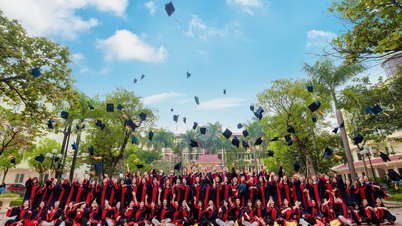
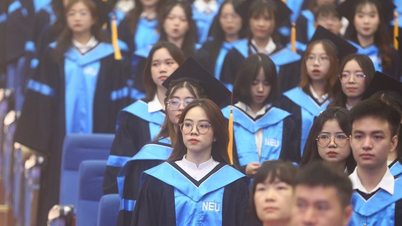


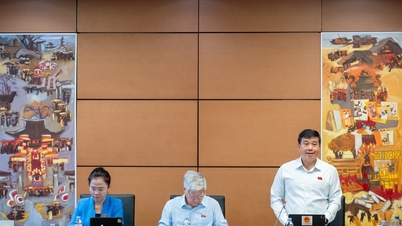
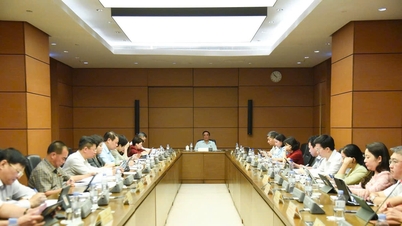













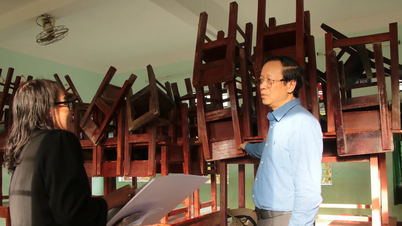
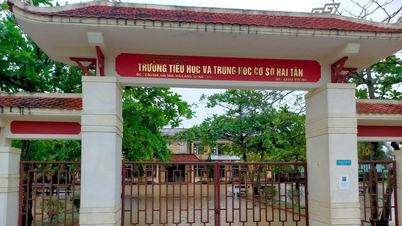
























































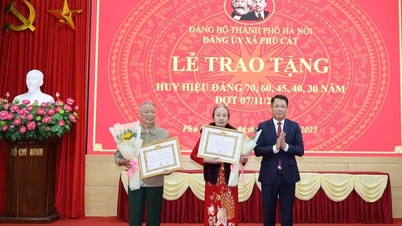
















Comment (0)